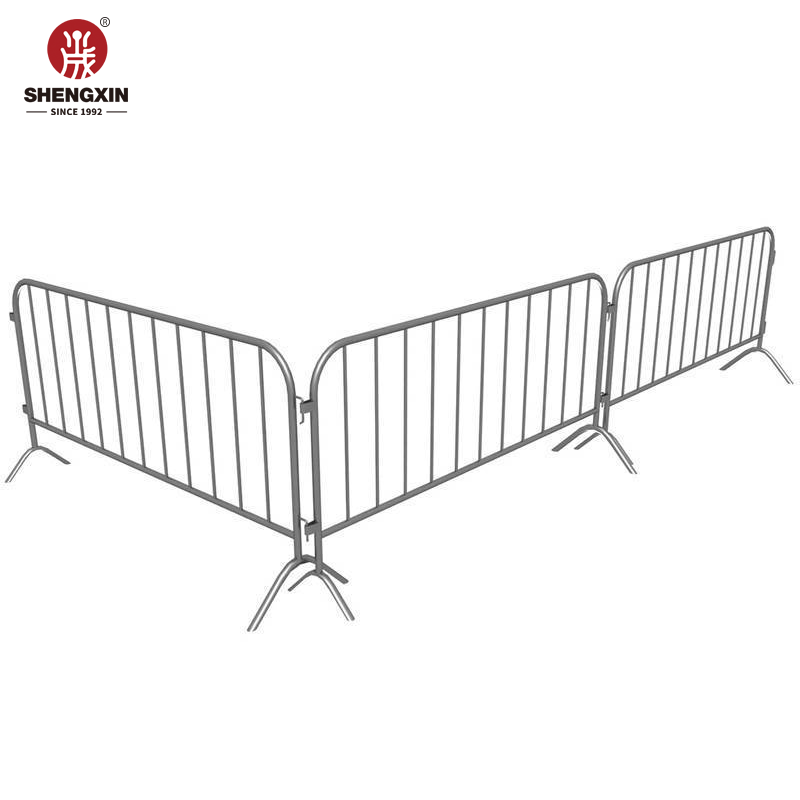
Nov . 09, 2024 05:47 Back to list
Effective Solutions for Temporary Fencing in Construction Projects and Site Management
Best Practical Construction Temporary Fences
In the realm of construction and site management, the importance of safety and security cannot be overstated. One of the most effective ways to ensure both is through the use of temporary fences. These barriers serve multiple purposes, including deterring unauthorized access, protecting the public, and safeguarding materials and equipment on-site. When choosing the best practical construction temporary fence, several factors should be considered, such as durability, ease of installation, versatility, and compliance with regulations.
Importance of Temporary Fences
Temporary fences play a crucial role in maintaining safety at construction sites. They establish a physical barrier that keeps unauthorized individuals away from potentially hazardous areas. This is particularly important for construction sites involving heavy machinery, excavation, or potentially dangerous materials. Moreover, a well-erected temporary fence helps to define the boundaries of the project, delineating the work area clearly and ensuring that pedestrians and bystanders maintain a safe distance.
Types of Temporary Fences
1. Chain Link Fences One of the most commonly used types of temporary fencing, chain link fences provide a robust and secure option. They are made from interwoven steel wires that create a diamond pattern, offering visibility while still forming a physical barrier. Their durability makes them suitable for both short-term and long-term projects.
2. Construction Site Fencing Panels These pre-fabricated panels are easy to set up and take down, making them a popular choice for many construction sites. They are often made from metal or high-density polyethylene and can be used for various applications. Their portability allows for quick adjustments to the site layout as needed.
3. Plastic Barricades Lightweight and often more affordable, plastic barricades are useful for short-term projects or temporary events. They can be filled with water or sand to enhance stability, making them an effective option for controlling crowds or marking boundaries in less hazardous environments.
best practical construction temporary fence

4. Privacy Fencing In some cases, construction companies may need to provide additional privacy for their sites. Privacy fencing, made of solid panels or mesh with privacy slats, can obscure the view of the site from outsiders. This can help minimize distractions for workers and keep sensitive information secure.
Factors to Consider When Choosing a Temporary Fence
- Durability The temporary fence must withstand various environmental conditions, including wind, rain, and potential impacts from equipment or vehicles. High-quality materials like galvanized steel or UV-resistant plastics can enhance longevity.
- Ease of Installation Time is often of the essence in construction projects. A temporary fence that is easy to install and dismantle will save valuable time and reduce labor costs. Look for options that require minimal tools and can be set up quickly.
- Height and Stability The height of the fence is crucial in preventing unauthorized access. Most temporary fences are between 6 to 8 feet tall. Additionally, ensuring that the fence is stable and secure will prevent it from being easily toppled or breached.
- Local Regulations Always consult local regulations regarding temporary fencing. Many cities and municipalities have specific requirements about the type of fencing that can be used, its height, and how it must be installed. Complying with these regulations is essential to avoid fines and delays.
Conclusion
Selecting the best practical construction temporary fence requires careful consideration of various factors, from security needs to compliance with local regulations. A suitable temporary fence not only enhances safety but also contributes to the overall efficiency and organization of a construction site. By investing in high-quality temporary fencing solutions, construction companies can protect their workers, adhere to legal requirements, and create a well-ordered workspace that facilitates productivity. As the construction industry continues to grow and evolve, the role of effective temporary fencing will remain pivotal in ensuring secure and efficient site management.
-
Premium ODM 7' Security Fence - High-Security & Durable
NewsAug.01,2025
-
Powder Coated Double Wire Mesh Fence for Germany Market - Anping County Shengxin Metal Products Co., Ltd.
NewsJul.31,2025
-
Powder Coated Double Wire Mesh Fence - Anping County Shengxin Metal Products Co., Ltd.|Durable, Corrosion-Resistant, Customizable
NewsJul.31,2025
-
Powder Coated Double Wire Mesh Fence - Anping County Shengxin Metal Products Co., Ltd | Durable Corrosion Resistant Fencing
NewsJul.31,2025
-
Powder Coated Double Wire Mesh Fence - Anping County Shengxin Metal Products Co., Ltd | Durability, Corrosion Resistance
NewsJul.31,2025
-
Privacy Chain Link Fence Slats | Durable Solutions
NewsJul.31,2025
